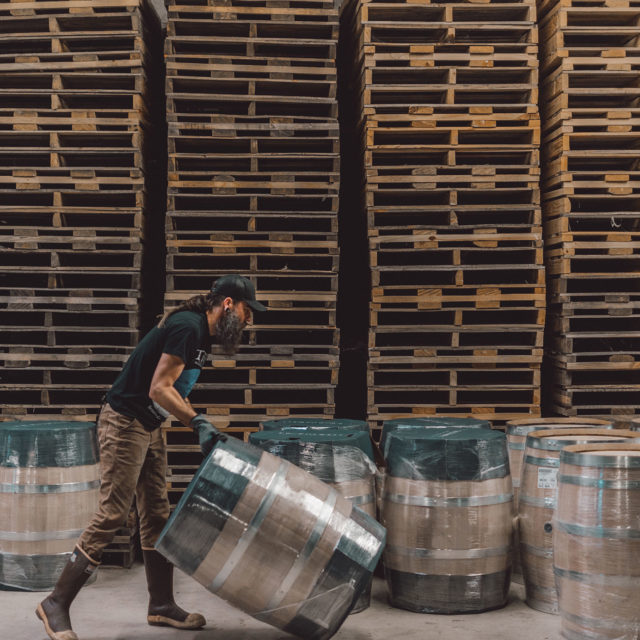American single malt whiskey sits squarely in the shadow of two behemoths: bourbon, a.k.a. America’s native spirit; and Scotch, an institution that has monopolized the single malt category for centuries.
As such, forging a path in the category has proved challenging for American distillers, which are competing not only with Scotch, but with single malts from Japan, India, Taiwan, and New Zealand.
But by celebrating local ingredients, harnessing unusual weather conditions, and following innovative practices, American distillers are making inroads into the single malt category. Nowhere is that more evident than the American West. In this region long lauded as the “land of opportunity,” distillers eager to showcase regional flair, like Westland, Westward, Stranahan’s, Balcones, and Sante Fe Spirits are pushing the American single malt category forward.
“We live in one of the best barley-growing regions in the world,” Steven Hawley, director of marketing of Seattle’s Westland Distillery and executive director of the American Single Malt Whiskey Commission, says. “We want to make a whiskey that is evocative of a sense of place.”
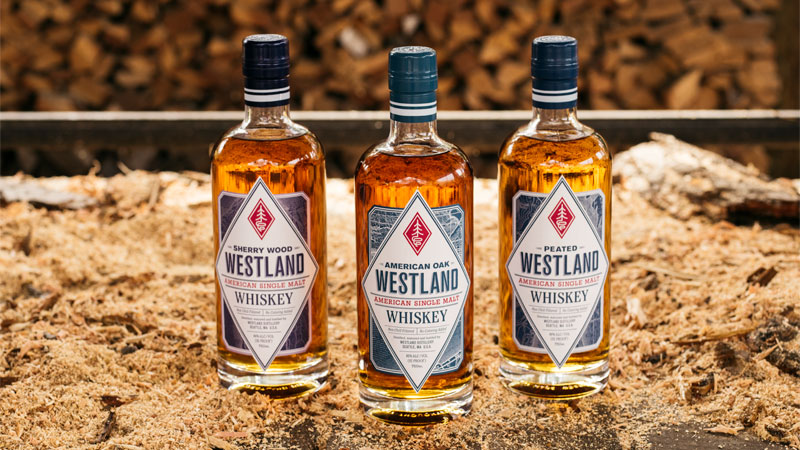
Westland joins a handful of distilleries in the Pacific Northwest, such as Copperworks in Seattle and Westward in Portland, Ore., using local strains of malted barley in their single malt whiskeys.
“What we’re doing is working collaboratively to make sure that everybody in the chain benefits, including the farmer,” Hawley says. “It’s another example of creating an economy that didn’t exist before. It requires all those people sharing a vision and having the same sensibilities and being willing to meet and work together to do something like that. It’s a perfect example of the power of American single malt whiskey.”
While the eastern U.S. favors a more traditional approach, distillers in the Pacific Northwest and Colorado are also influenced by creators outside the category, such as beer. Westland, for example, uses Belgian brewer’s yeast in its spirits. It also repurposes endangered Garryana oak that’s native to the Pacific Northwest.
Stranahan’s of Denver debuted in 2003. Its Rocky Mountain Single Malt celebrates ingredients grown and found within the state, including barley and water sourced from the Rocky Mountains. The distillery sits at a mile above sea level, and the elevation affects its process and finished product.
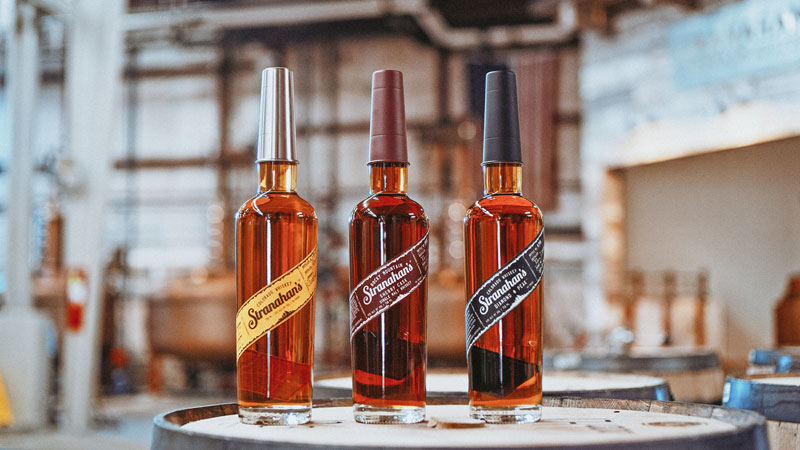
“Weather-related shifts in barometric pressure still affect our aging run times, but in general the barometric pressure from the Rocky Mountains creates positive pressure inside our barrels,” Owen Martin, distiller, Stranahan’s Rocky Mountain Single Malt Whiskey, says. “With our climate control, the consistent warm temperatures keep the pores of the wood open. This helps give the whiskey a deeper and more complex flavor.”
Other Colorado distilleries making single malts include Deerhammer, Peach Street, and Spirit Hound.
Meanwhile, in the Southwest, “you’re getting some regionality from people that are doing things like smoking malt with mesquite,” Westland’s Hawley says. Low rainfall and high elevation give southwestern distilleries like Santa Fe Spirits, Arizona’s Whiskey Del Bac, and Utah’s Sugar House unusual conditions for distilling and aging whiskey.
“Everybody was talking about bourbon,” Santa Fe Spirits founder, Colin Keegan, says. “[I]t wasn’t that I didn’t want to make bourbon, but I wanted to do something that nobody could compete with.” Keegan first bottled Silver Coyote Pure Malt Whiskey, an unaged “white dog” made from malted barley. Next, he aimed to make an aged single malt whiskey that evoked the American Southwest, so the distillery released its now award-winning staple, Colkegan Single Malt Whiskey.
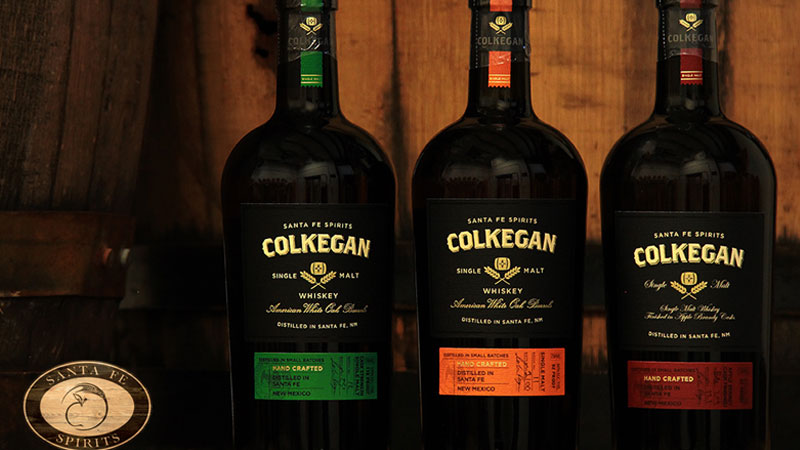
“To really reflect the region, we decided on mesquite chips in the malting process that gives our whiskey the campfire smokiness,” Keegan says. “That, to us, speaks Southwest.”
Next up for Santa Fe Spirits is a more traditional, unsmoked single malt that will offer a basis of comparison not only to its own mesquite-smoked bottling, but also to other single malts on the market. “It’ll be interesting because that’s going to be [made with] a two-row barley,” says Keegan, referring to the type of barley typically used for distillation. “That’s technical for most single malt that doesn’t have any smoke to it, so when that comes out, we’ll see if [the climate in] our region has made a difference compared to Seattle or Massachusetts.”
A few years after Keegan and other distillers brought their American single malts to market, however, they encountered a series of problems. For one, a lack of understanding that single malt is not inherently Scottish: It can be made anywhere.
“Sometimes people say, ‘Oh, let me try your Scotch,’” Jared Himstedt, head distiller at Balcones in Waco, Texas, says. “We don’t usually correct them, but that’s a pretty funny thing to say.”
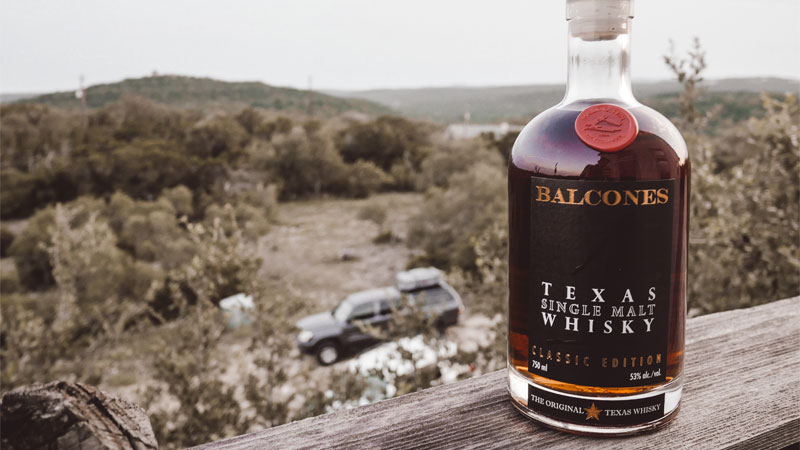
Like Andalusia and Spirit of Texas, two other distilleries making single malts in Texas, Balcones Distilling embraces its Texan roots. That means having to accept some of the more volatile aspects of its locale.
“It’s not just that it’s hot — the heat’s a big deal — but it’s more of the variability that is the main factor that makes Texas maturation so crazy,” Himstedt says, adding that it’s not uncommon to have 20- to 30-degree temperature swings from the coldest to hottest parts of the day.
“That’s more variability than Scotland gets all year,” he says. “It’s like the barrels are almost hyperventilating by constantly expanding and shrinking. The oldest malt we have that is still in barrels is about five years old — those are about half-full.”
Also, because of the state’s extreme heat and arid climate — a stark contrast to the moderate temperatures in the Pacific Northwest where barley grows well — the distillery has long opted to use the Scottish barley variety Golden Promise, grown out of state. Over the last couple of years, however, Balcones has begun experimenting with Texas-grown barley.
“There’s a Texas maltster, Blacklands Malt, that was working with the agricultural school Texas A&M for years trying to develop varieties that would be drought- and heat-resistant,” says Himstedt. This led to Balcones’ June 2019 launch of High Plains Texas Single Malt, a whiskey made with barley grown and malted in the Lone Star State.
The biggest challenge for homegrown distilleries has been that the Alcohol and Tobacco Tax and Trade Bureau (TTB) does not recognize American single malt as a standalone category. That means a lack of recognition not only by the federal government, but also by liquor stores, wholesalers, bars, whiskey publications, and so on. Where does this whiskey fit in on store shelves? How should customers think about it?
Eager to answer these questions, in 2016, Hawley, along with Westland co-founder Matt Hoffman and a handful of other distillers, founded the American Single Malt Whiskey Commission. In addition to Westland, Balcones, and Sante Fe Spirits, its founding members include Virginia Distillery Co., Copperworks Distilling, Headframe Spirits, House Spirits Distillery (Westward Single Malt), FEW Spirits, and Triple Eight Distilling.
The group created a unified definition of what the category should entail — whiskey made from 100 percent malted barley, distilled at a single distillery in the U.S. — and began petitioning the TTB for federal delineation. Three years later, it has support from the Distilled Spirits Council of the United States (DISCUS) and the the American Craft Spirits Association (ACSA), but it’s still awaiting final approval, which could take up to eight years, Himstedt says.
Eventually, the commission hopes to see signs for “American single malt” in liquor stores across the country, right next to the signs for Japanese single malt and Scotch. “Our ambition from the beginning was to be a global single malt,” Hawley says.
6 American Single Malts to Try
A handful of distilleries in the Wild West of American whiskey are helping define a new category. Here are six to look for.
Westland Distillery, Seattle, WA
Bottling the region’s “terroir” has been a driving principle for Westland since its founding in Seattle in 2010. The distillery’s flagship is an American oak single malt whiskey that uses roasted malts (which Hawley says is “nearly unheard of”), as a well as a peated whiskey and sherry cask-finished whiskey.
In 2017, the distillery was acquired by Remy-Cointreau.
Sante Fe Spirits, Santa Fe, NM
When Colin Keegan and his partner first purchased an apple orchard in Santa Fe, they had no intention of opening a distillery. Now, Santa Fe Spirits’ range includes unaged Silver Coyote Pure Malt Whiskey, Colkegan Single Malt Whiskey, Colkegan Apple Brandy Cask Finished, and a cask-strength version of Colkegan.
Stranahan’s Rocky Mountain Single Malt, Denver, CO
Stranahan’s was Colorado’s first legal distillery since Prohibition. While the flagship whiskey is aged in new American white oak barrels, the distillery has also experimented with oloroso sherry barrels for its four-year-old Sherry Cask Single Malt Whiskey, and marries whiskeys finished in various casks — wine, sherry, Cognac, rum and tequila — for its annual Snowflake Single Malt Whiskey. The distillery uses solera aging for its Diamond Peak Single Malt Whiskey.
Balcones Distilling, Waco, TX
Based in Waco, Texas, Balcones’ single malt roster includes its Classic Edition, Peated Texas Single Malt Whisky, Rum Cask Finish (using casks that formerly aged the distillery’s own rum), Mirador (a blend of whiskeys aged solely in used casks), and an annual Staff Selection release. Each of these is distilled in a pot still and aged, on average, for about two years.
Westward Whiskey, Portland, OR
One in the original contingent of distilleries pushing for federal delineation of American single malt, Westward launched its flagship whiskey, made with regionally grown and malted barley as well as brewer’s yeast, under Portland’s House Spirits Distillery in 2012. The brand’s lineup also includes a newly released Oregon Stout Cask finished single malt that’s made in partnership with local breweries. In fact, many of Westward’s distillers, including co-founder and master distiller Christian Krogstad and head distiller Miles Munroe, have previous experience as brewers, too.
St. George Spirits, Alameda, CA
For nearly four decades, California craft distillery St. George Spirits has churned out one hit spirit after another, from a trio of gins to absinthe and shochu. It added its first American single malt, St. George Single Malt Whiskey, to its arsenal in 2000. That was followed in 2016 by the release of Baller Single Malt Whiskey, which is intended to make a great base for Japanese-style Highball cocktails.
